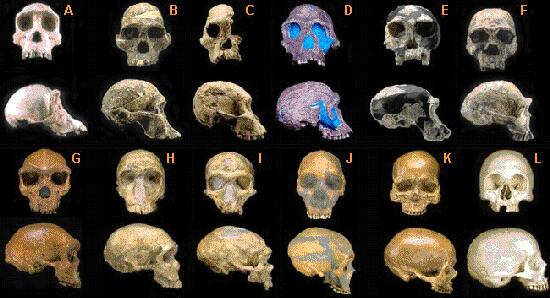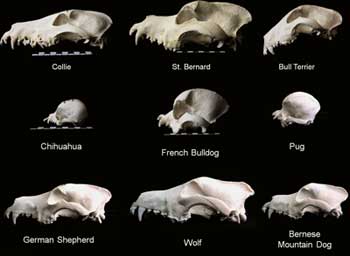Actually, I am referring to living species. Lifepsyop is arguing that there should be fine gradations between living species, if I am understanding his argument correctly. This would require several things to happen:
1. No lineage ever goes extinct.
2. The rate of speciation stays constant and high.
3. Natural selection causes the same rate of morphological change in every single lineage.
None of those things are necessary for evolution. There is no expectation that there should be fine gradations between every single living species.
It has to do with whether or not there are characteristics that are more important in the phylogeny than others. For example, in the phylogeny of animals the presence or absence of a backbone (or more accurately a notochord) is a more heavily weighted characteristic than the presence or absence of mammary glands. Here is a more lengthy description from talkorigins:
Although it is trivial to classify anything subjectively in a hierarchical manner, only certain things can be classified
objectively in a consistent, unique nested hierarchy. The difference drawn here between "subjective" and "objective" is crucial and requires some elaboration, and it is best illustrated by example. Different models of cars certainly could be classified hierarchically—perhaps one could classify cars first by color, then within each color by number of wheels, then within each wheel number by manufacturer, etc. However, another individual may classify the same cars first by manufacturer, then by size, then by year, then by color, etc. The particular classification scheme chosen for the cars is subjective. In contrast, human languages, which have common ancestors and are derived by descent with modification, generally can be classified in objective nested hierarchies (
Pei 1949;
Ringe 1999). Nobody would reasonably argue that Spanish should be categorized with German instead of with Portugese.
The difference between classifying cars and classifying languages lies in the fact that, with cars, certain characters (for example, color or manufacturer) must be considered more important than other characters in order for the classification to work. Which types of car characters are more important depends upon the personal preference of the individual who is performing the classification. In other words, certain types of characters must be weighted subjectively in order to classify cars in nested hierarchies; cars do not fall into natural, unique, objective nested hierarchies.
Because of these facts, a cladistic analysis of cars will not produce a unique, consistent, well-supported tree that displays nested hierarchies. A cladistic analysis of cars (or, alternatively, a cladistic analysis of imaginary organisms with randomly assigned characters) will of course result in a phylogeny, but there will be a very large number of other phylogenies, many of them with very different topologies, that are as well-supported by the same data. In contrast, a cladistic analysis of organisms or languages will generally result in a well-supported nested hierarchy, without arbitrarily weighting certain characters (
Ringe 1999). Cladistic analysis of a true genealogical process produces one or relatively few phylogenetic trees that are much more well-supported by the data than the other possible trees.
Interestingly, Linnaeus, who originally discovered the objective hierarchical classification of living organisms, also tried to classify rocks and minerals hierarchically. However, his classification for non-living objects eventually failed, as it was found to be very subjective. Hierarchical classifications for inanimate objects don't work for the very reason that unlike organisms, rocks and minerals do not evolve by descent with modification from common ancestors.
The degree to which a given phylogeny displays a unique, well-supported, objective nested hierarchy can be rigorously quantified. Several different statistical tests have been developed for determining whether a phylogeny has a subjective or objective nested hierarchy, or whether a given nested hierarchy could have been generated by a chance process instead of a genealogical process (
Swofford 1996, p. 504). These tests measure the degree of "cladistic hierarchical structure" (also known as the "phylogenetic signal") in a phylogeny, and phylogenies based upon true genealogical processes give high values of hierarchical structure, whereas subjective phylogenies that have only apparent hierarchical structure (like a phylogeny of cars, for example) give low values (
Archie 1989;
Faith and Cranston 1991;
Farris 1989;
Felsenstein 1985;
Hillis 1991;
Hillis and Huelsenbeck 1992;
Huelsenbeck et al. 2001;
Klassen et al. 1991).
http://www.talkorigins.org/faqs/comdesc/section1.html#nested_hierarchy
And yet, as has been pointed out, neither you nor really any other creationists are willing to do this[/QUOTE]




